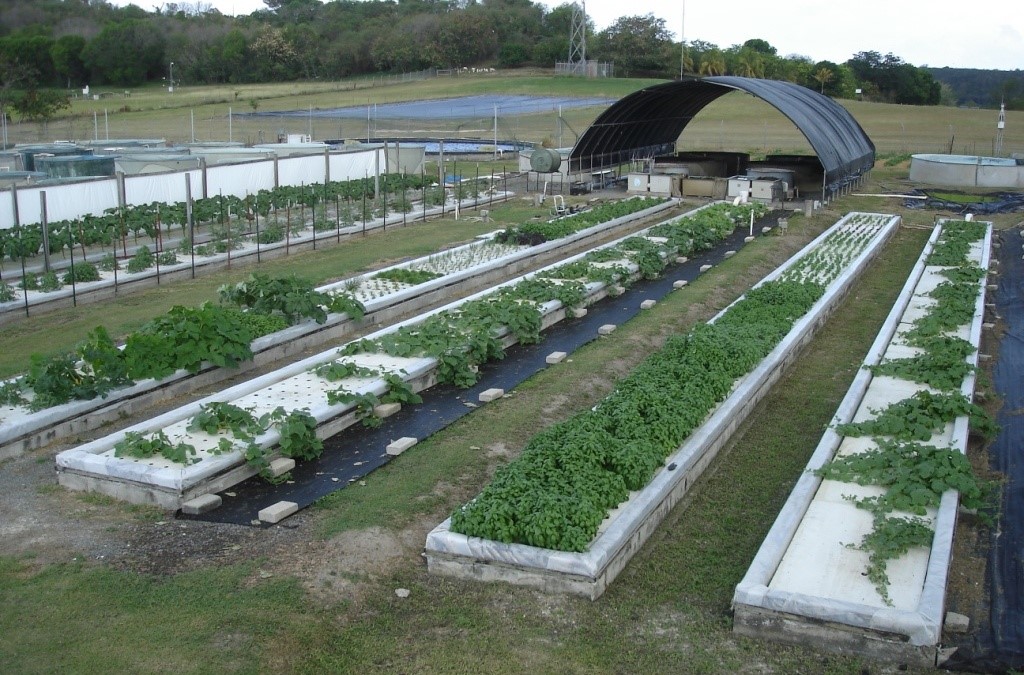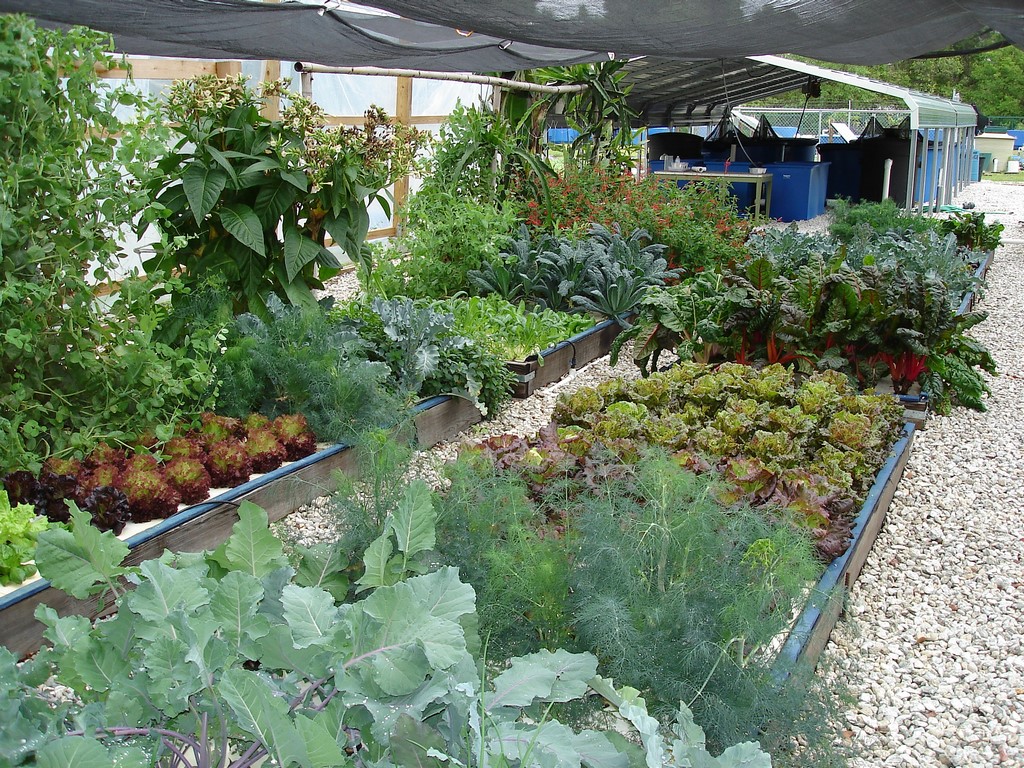Think Food

When I look at the average pond, I tend to perceive a range of missed opportunities.
I come from the world of aquaponics, where I’ve spent my career figuring out ways to integrate environments for fish and plants in ways that make both fins and leaves grow like crazy. For the most part, I work on an industrial scale, designing facilities where huge populations of fish are grown as food and, nearby, huge quantities of herbs and vegetables are prepared for consumption as well.
It’s the sort of system that anyone who has ever built a fish-sustaining pond paired up with a bog-style filtering area knows pretty well: The fish are fed, generate waste products and go about the processes of growing to full size. Their waste products are pumped through a filtering bog where plants take up the nutrients and, in turn, grow as robustly as the fish do, with the water cycling back to the fish pond in what is essentially a closed system.
For the most part, installers of these decorative ponds surround their fish with flowering aquatic plants to create lovely displays. These systems do a great job of taking care of themselves if there’s a large enough volume of water to begin with and the planted area is substantial enough to keep up with the fish-generated nutrient loads.
What I would like to suggest here – addressing the “missed opportunities” mentioned above – is that exchanging edible fish for ornamental Koi and edible plants for flowers might not be a bad way to go.
SOMETHING SPECIAL
My work takes place on a grand scale with no concern for aesthetics whatsoever: The fish are generally held in fabricated circular tanks and the plants are arrayed as they would be at a conventional farm – although in long, rectangular aboveground tanks that contain only water rather than soil.
The average reader of WaterShapes might consider these “farms” to be unsuitable for the aesthetic results you generally seek. But for us, “effective,” “efficient” and “direct” are the watchwords: If we can set things up in such a way that our fish thrive and our food crops flourish, we consider that to be its own form of beauty.
What I’d like to suggest here is that there’s a middle ground: If your goal as a watershaper becomes one of supplementing the diet of a family of six, say, then it would be possible, even beneficial, to look at aquaponics as a possibility for those clients. On that level, a backyard pond becomes a family farm and laboratory – a place where various crops can be tried and rotated in and out of the mix to see what works best in meeting the family’s needs.
| The aim of commercial-scale aquaponics is production of large volumes of food in the form of fish and edible plants – in this case, red tilapia and lettuce – in areas where the soil and local waters may not be capable of meeting the nutritional needs of local populations. Our projects are industrial in every way, but if a pond builder were to substitute Koi for tilapia and use their waste to support a kitchen garden on a residential scale, the potential is there to align functionality with aesthetics in ways we wouldn’t consider. |
As aquaponics specialists, my colleagues and I have been pursuing these fish/plant ecosystems for more than 30 years now. The discipline emerged as a combination of aquaculture – that is, the farming of fish for human consumption – and hydroponics – that is, the production of edible plants without soil. The goal was to find a way of dealing with the waste generated by aquaculture by using it to sustain plant growth; before long, an industry was born and now has its own associations, journals, suppliers and field practitioners.
Our projects dot the globe at this point, often in places where the soil is unsuited to conventional agriculture. It didn’t take long for us to recognize that plants grow rapidly when exposed to the dissolved nutrients excreted by fish or generated in the microbial breakdown of fish wastes. It was, we learned, all about balance and figuring out how to size systems appropriately with respect to water volumes and fish/plant populations.
We also discovered in rapid order that the nutrients generated by the fish – toxic to them if not transformed into nitrate ions – are nectar to plants, especially to leafy green plants and herbs. So the closed systems we were developing were actually ideal in all sorts of wonderful ways. As long as we kept the water moving so excessive nutrients didn’t collect in the fish tanks, we knew we had a true bonanza on our hands.
SCALABLE POTENTIAL
In general terms, what we do in aquaponics represents little more than a marginal course change for those who design and install ecosystem ponds and may even come into play for those involved in designing and building natural swimming pools that use plants to keep bodies of water filtered for swimming humans.
If I were a pond installer, my first questions would revolve around sizing and scale. The good news is that this is all fairly well settled: If you want, you can use the specifications for an aquaponic arrangement that has already been designed and tested: Many of these systems are in common use with good track records.
We’re still relatively new at this, but already standard designs are emerging and include details of layout, tank sizing, pipe sizing, pipe placement, pumping rates, aeration rates, infrastructure needs and more. We’ve learned through experience that these systems are scalable and proportionate, so once you have the core figures in hand, it becomes a matter of considering the available space and calculating accordingly.
| On a large scale, the productivity of these systems with respect to both fish and plant harvests is phenomenal – and it’s all done without any soil. Clearly, it takes a lot of fish waste to sustain the mass quantities of basil, lettuce and tarragon shown here, but on a residential scale, Koi and other ornamental pond fish can do a similar job – all without putting their lives on the line as they would in our tanks. |
If a limited amount of space is available, for example, a standard design can be scaled down to fit the space. It’s not unlike working out the hydraulics for a swimming pool: If a scaled-down tank or pipe size falls between commercially available pump sizes, for example, go with the larger size – but maintain the flow rate by selecting the right pump and, as necessary, installing bypass valves and lines to moderate the flow. Scaling up is even easier.
In our systems, of course, we look at the fish as food, but it’s possible to use the same principles in creating environments for Koi and other fish too valuable or precious to put in a skillet. The key here is balance: The fish population needs to generate a waste stream large enough to meet the needs of the edible plants you’ve selected. In addition, where in pond systems the bog areas are often small by comparison to the pond itself, those physical relationships can change depending on the plant selection and the fish capacity of the pond.
| The water-loving crops that can be produced in these systems run a wide range, from production of mixed greens (left) or canteloupes (middle) to support of varied edible and ornamental crops (right). It’s all about water, fertilizer and circulation – and should be familiar in principle to anyone who has worked with good-sized bog-filtration systems. |
Many types of vegetables have been grown in typical aquaponic systems. In purely commercial settings, we tend to focus on culinary herbs because they generate the most income per unit of space. These crops include basil, cilantro, chives, parsley, portulaca and mint, but there’s nothing to stop a backyard farmer with no commercial intent from raising tomatoes, cucumbers, eggplants and other water-loving vegetable crops alongside an aquatic kitchen garden filled with herbs.
Lettuce is another good choice for aquaponic systems because it can be produced in cycles lasting just three to four weeks and experiences relatively few pest problems. Swiss chard, bok choi, Chinese cabbage, collards and watercress are candidates here, too, as are marigolds and zinnias for a bit of floral variety and pest control.
In commercial systems, the choices of fish and plants are entirely driven by the ability of the grower to market the final product. The calculus in a backyard is obviously different, and the range of candidate plants is limited only to those that respond well when grown hydroponically – meaning most vegetable and herb crops – weighed against the family’s dietary needs and preferences.
NEXT STEPS
Some watershapers are already following this path. I’ve seen units that allow for vertical planting approaches that eliminate the need most of our commercial-scale systems have for large areas for growth and cultivation. I’ve also heard that pond plantings have been expanding to include selections you might find in a typical kitchen garden.
All of that is great. Although the design of aquaponic systems and the choice of hydroponic components and fish and plant combinations may seem challenging, these watershapes – and yes, I see them as a distinct variety of watershape – are simple to operate when fish are stocked at a rate that provides a good nutrient stream for plant production. Finding that balance is, of course, the key.
As our techniques and technologies mature, we already see that operating small aquaponic systems is an excellent hobby. They can be as small as an aquarium with a tray of plants covering the top. Our own pursuits at The Aquaponics Doctors, which has operations in the United States, Australia and other countries, are geared to a grander scale, with commercial sites covering many acres in places where markets are able to absorb the substantial output.
Regardless of scale or purpose, the management of fish and plants through aquaponics is a gratifying endeavor that yields something amazingly useful: food for our tables.
James Rakocy is president of The Aquaponics Doctors, a global consulting firm that deals with all aspects of aquaponic technology from planning and system construction to operations and harvesting procedures. Previously, he served as director of the Agricultural Experiment Station and as research professor of aquaculture at the University of the Virgin Islands in St. Croix. He may be reached at tadcontact@theaquaponicsdoctors.com.


















